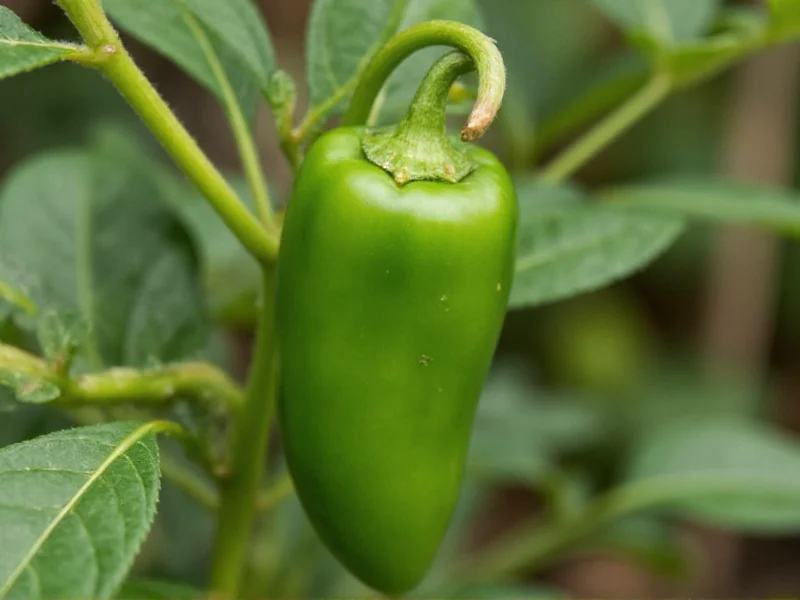Serrano peppers rank among the most versatile chilies in culinary applications, offering a perfect balance between heat and flavor complexity. These slender, 1-4 inch peppers originated in Mexico's mountainous regions and have become essential in both traditional and modern cooking. Understanding serrano pepper uses unlocks new dimensions in flavor development for home cooks and professional chefs alike.
What Makes Serrano Peppers Unique
Serranos (Capsicum annuum) stand out with their distinctive characteristics:
| Characteristic | Serrano Pepper | Comparison to Jalapeño |
|---|---|---|
| Heat Level (Scoville) | 10,000-23,000 | 2-4x hotter |
| Flavor Profile | Grassy, bright, herbal | More complex than jalapeño |
| Texture | Firmer, thicker walls | Holds shape better when cooked |
| Color Varieties | Green, red, orange, yellow, brown | More color variations |
Top Culinary Applications for Serrano Peppers
1. Fresh Salsas and Dips
When exploring serrano pepper culinary uses, fresh preparations showcase their vibrant flavor best. Finely diced serranos add controlled heat to:
- Pico de gallo (use 1-2 peppers per batch)
- Guacamole (remove seeds for milder version)
- Tomatillo salsa verde (roast first for deeper flavor)
- Creamy avocado salsa (balances heat with richness)
Pro tip: Soak diced serranos in lime juice for 10 minutes to mellow their heat while preserving flavor.
2. Cooked Sauces and Stews
Cooking transforms serrano peppers' flavor profile. When developing serrano pepper recipes for cooked dishes:
- Char over open flame for smoky enchilada sauces
- Simmer whole in bean stews (remove before serving)
- Puree with roasted tomatoes for vibrant pasta sauces
- Add to seafood cocktails for authentic Mexican flavors
3. Pickled and Preserved Preparations
Preserving serrano peppers extends their usability. Effective serrano pepper preserving methods include:
- Vinegar-based quick pickles (ready in 24 hours)
- Escabeche-style preservation with carrots and onions
- Freezing whole peppers (no prep needed)
- Drying for homemade chili powder
Serrano Pepper Substitutes and Equivalents
Understanding serrano pepper substitutes for jalapeño is crucial when ingredients are unavailable. Consider these alternatives:
- Jalapeño: Use 1.5x quantity for similar heat (milder flavor)
- Habanero: 1/4 quantity (much hotter, different flavor profile)
- Cayenne: 1/2 fresh pepper or 1/8 tsp powder
- Fresno: Nearly identical substitute (slightly sweeter)
When substituting serrano peppers in recipes, always taste as you go—heat levels vary significantly between individual peppers.
Safety and Handling Best Practices
Proper serrano pepper handling techniques prevent discomfort:
- Wear gloves when handling multiple peppers
- Avoid touching face, especially eyes
- Use separate cutting boards for hot peppers
- Wash hands thoroughly with soapy water (not just rinsing)
- Remove seeds and white membranes for milder heat
If pepper burn occurs, apply milk or yogurt to affected skin—oil-based solutions like olive oil also help neutralize capsaicin.
Growing and Selecting Quality Serranos
For those exploring home cultivation of serrano peppers, select firm, glossy specimens without wrinkles. Mature serranos develop deeper flavors as they ripen from green to red. When growing serrano peppers at home:
- Provide 6-8 hours of direct sunlight daily
- Harvest when peppers reach 2-4 inches long
- Allow some to fully ripen on plant for sweeter flavor
- Water consistently but avoid overwatering
Storage Methods for Maximum Freshness
Extend serrano pepper shelf life with these storage techniques:
- Refrigerate whole peppers in crisper drawer: 2-3 weeks
- Freeze whole or sliced: 6-12 months (no blanching needed)
- Pickled serranos: 6 months refrigerated
- Dried peppers: 1 year in airtight container
Health Benefits Supported by Research
Serrano peppers contain capsaicin, which offers several evidence-based health benefits. When incorporating serrano pepper health benefits into your diet:
- Metabolism boost: Capsaicin increases energy expenditure by 4-5%
- Pain relief: Topical applications reduce nerve pain
- Vitamin C powerhouse: One pepper provides 107% of daily requirement
- Antioxidant properties: Contains vitamin A and flavonoids
Research published in the Journal of Nutritional Science confirms regular chili consumption correlates with reduced mortality risk, particularly from heart disease.
Advanced Serrano Pepper Techniques
Elevate your cooking with these professional serrano pepper preparation methods:
- Infused oils: Steep sliced peppers in olive oil for 3-7 days
- Compound butters: Blend minced serrano with softened butter and lime zest
- Smoked variations: Use chipotle serranos for complex heat
- Sweet-heat combinations: Pair with mango or pineapple for balance
Frequently Asked Questions
Can I use serrano peppers instead of jalapeños in recipes?
Yes, but adjust quantities carefully. Serranos are 2-4 times hotter than jalapeños, so use approximately half the amount when substituting. For milder results, remove seeds and membranes before chopping. The flavor profile differs slightly—serranos offer brighter, grassier notes compared to jalapeños' earthier taste.
How do I reduce the heat of serrano peppers without losing flavor?
Remove all white membranes and seeds, which contain most capsaicin. Soak diced peppers in lime juice or vinegar for 10-15 minutes before use. Cooking methods also affect heat—roasting mellows serranos slightly, while raw applications deliver maximum heat. For significant heat reduction, blanch peppers in boiling water for 30 seconds before use.
What's the best way to store fresh serrano peppers?
Store unwashed serranos in the refrigerator's crisper drawer in a paper bag (not plastic) for optimal humidity control. Properly stored, they'll maintain quality for 2-3 weeks. For longer storage, freeze whole peppers on a baking sheet before transferring to freezer bags—they'll last 6-12 months and can be used directly from frozen in cooked dishes.
Are red serrano peppers hotter than green ones?
Red serrano peppers are typically slightly hotter than green ones, but the difference is minimal compared to the natural variation between individual peppers. The primary difference is flavor—red serranos develop sweeter, more complex notes as they ripen, while green peppers maintain brighter, grassier characteristics. Heat levels primarily depend on growing conditions rather than color.











 浙公网安备
33010002000092号
浙公网安备
33010002000092号 浙B2-20120091-4
浙B2-20120091-4